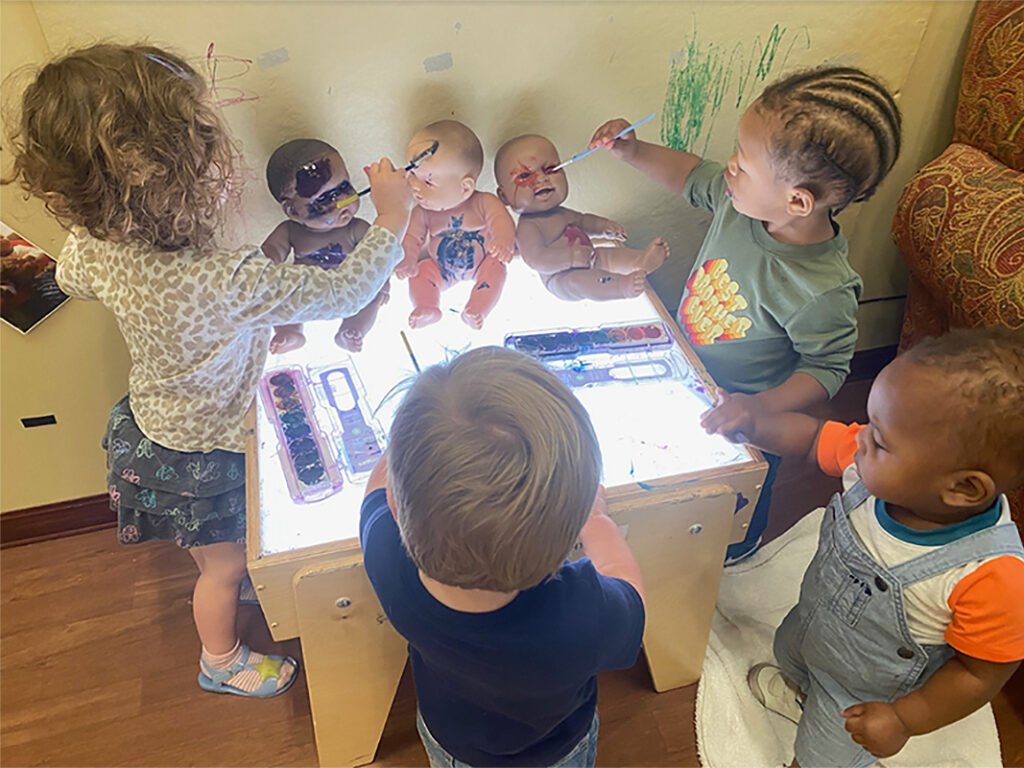
Playing with water has many benefits for infants and toddlers. Water play promotes learning in many areas of development. In the first three years alone, a child’s brain grows to 80% of its full adult size — these early years are crucial in providing opportunities for little ones to learn about the world around them. Water play is a powerful and incredibly simple activity to engage your child’s learning.
When providing water-based activities, children can explore math concepts. They can see quantities of water increasing and decreasing in a pool, count how many splashes they jump into a puddle, and make patterns with runny watercolors. When they are filling, carrying, dumping, pouring, splashing, and more, young children are exploring process and outcomes: When I dump this bucket on my head, I am covered in water; When I dip this brush into paint and run it over this piece of paper, I can make a line.
When adding paintbrushes, sponges and other tools and materials to our water play, children also gain the chance to improve their physical skills. They practice hand-eye coordination when they purposefully bring their tools into cups of water and onto paper or other surfaces. They can engage their senses to explore how different tools can make water feel different on their bodies, like feeling the drops from a sprinkler compared to sitting in a pool, or feeling a wet sponge on our hands compared to a wet paintbrush.
Young children also engage in conversation during water play, which boosts both their language development and their social and emotional skills. They do this by interacting in parallel play: sitting together in pools and running together under sprinklers. As older infants build those socioemotional skills into toddlerhood, they will soon evolve from parallel play into inviting friends to play alongside them. Playing in water is fascinating for infants and toddlers. They feel comfortable, they laugh, and they are curious. It is just another way to learn about their world.







